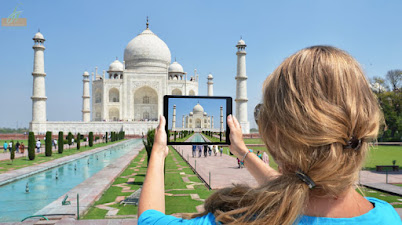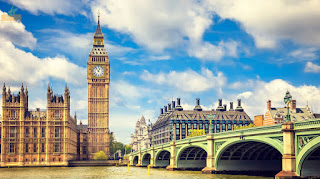Top 10 Tourist Places in India That Every Tourist Must Visit
India is a beautiful land that has been home to many vibrant civilizations for centuries. With one of the largest populations in the world, India boasts a rich culture and heritage. Not only are its natural landscapes breathtaking but also its architecture is not to be missed. At the same time, India is a fascinating country with a dynamic culture. It's become known as the hub of East Asia and south-east Asia, in part due to its geography and size and also due to its historical ties with China. India is famous for both its wildlife diversity and its deep-rooted history, so there's always something new waiting to be discovered! Things to do in India include the opportunity to visit sacred sites as well as nature lovers will enjoy its sun-washed beaches, lush national parks, and exciting wildlife sanctuaries. From the magnificent Taj Mahal in Agra to the holy sites of Harmandir Sahib (formerly the Golden Temple) in Amritsar. Before travelling to India from Dubai, Make sure to check all the requirements for India visa from Dubai, UAE according to your nationality.
To help you make the most of your time in India, check out these top tourist attractions of India that are mentioned in the lists below
• The
Ganges River
The Ganges, which is also referred to as the Ganga after the Hindu goddess, has long been one of India's most revered natural wonders and has proven popular with both Indian nationals and travelers from around the world. Cities such as Varanasi are dotted along the river’s banks where both local people and tourists will head to enjoy some of the cultural attractions that have sprung up in this area. Its location along India's spiritual east coast only adds to its mysticism, attracting thousands each year to participate in religious ceremonies held by Brahmin priests. Many tourists choose to experience the river on a live-aboard boat tour, exploring this national treasure while enjoying the Indian cuisine served on-board. Numerous access points are available along the Ganges River banks where countless people come to worship and pray. Some steps are leading directly into the water that non-worshippers and tourists alike can take advantage of to get close to the river. While these "ghats" have been around for centuries, they were extensively improved in 1775 and today's visitors can enjoy one of the most vibrant cultures in India by being a part of some ancient ceremonies that often occur on these steps with bright colors around them.
• Taj
Mahal
The Taj Mahal is one of India's most famous landmarks and the world's most widely recognized symbol of love. Built by Emperor Shah Jahan in memory of his favorite wife, Mumtaz Mahal, it took 15 years to complete (1630-48). Even today, visitors are entranced by its elegance and it is considered to be one of the greatest feats of architecture as well as a pinnacle of Islamic art. The Taj Mahal is one of India's great landmarks but what many people don't know is that its medieval design includes elements from both Hindu and Muslim religions. The Taj Mahal is mostly constructed of white marble and it invites tons of attention with beautiful inlaid floral patterns, precious stones, and semi-precious gems such as jade, lapis lazuli, diamonds, mother of pearl. If you can get to the Taj Mahal early in the morning or late that night at dusk or dawn, it would be a great time to see all the changes in both light and atmosphere. It's also nice to catch a view of the reflection from the far river bank when possible — make sure to take advantage if you plan on a selfie!
- Shri Harmandir Sahib: The Golden temple
The city of Amritsar is an important religious center for Sikh culture and history. Harmandir Sahib (The golden temple) was founded in 1577 by Ram Das, the city of Amritsar still stands today as a representation of the most important points in Sikh history and culture. The main attraction here is Harmandir Sahib or Golden Temple. Built in 1604 and often referred to as a holy temple, the Gold Temple stands tall even amongst the most beautiful structures in the country and attract devotees from many different faiths. This shrine features such prominent features as gold decorations all over its structure, ranging from intricately crafted marble domes to intricate carvings on black stone walls. Open daily to visitors, this place of worship comes alive at night when its premises are illuminated through beautifully lit sconces with multi-colored bulbs hanging across numerous trees outside all around the building.
- Jaisalmer, Rajasthan: The Golden City
Jaisalmer is a city and a municipality of Rajasthan state in western India known as the Golden City due to the yellow sandstone used in many of its buildings. Once known as Jaisalmer state, it was founded during the 12th century by the Khatri Rajputs. The major attractions are Jaisalmer Fort, Patwaon ki Haveli, Chhatrapati Shivaji Museum, and Jain temples of Jaisalmer. Jaisalmer is famous for its sand sculpturing festival and remote desert architecture which attracts tourists to this unforgiving desert landscape year-round. The fort boasts 99 bastions, a series of defense walls used to protect the main building known as the palace. The Maharaja's Palace is the largest and most important of all the buildings in the fort because it served as an abode for rulers during their stay at Bombay! This palace has many unique features from intricate stone doors to spacious royal living quarters. The former King's chambers are exquisitely decorated with tile work imported from China and Italy and there are also scenes carved into solid rock, highlighting important events in Hindu mythology.
- The Red Fort
The Red Fort situated in New Delhi was built by Shah Jahan in 1648 as the center of Mughal power - a role it played until 1857 - the magnificent Red Fort in New Delhi was named after “the red sandstone” which was basically used in the construction of The Red Fort. It’s easy to get lost in Chatta Chowk, a 17th-century covered market selling everything from jewelry to silk garments, as well as souvenirs and many delicious foods. While you can explore Shah Jahan’s fort with your family on your own, guided tours of the magnificent white marble Hall of Public Audiences (where he received his subjects) can provide an incredible insight into the life of India’s Emperor Shah Jahan and the Mughal Empire at its peak.
- Gateway of India
Mumbai is a magical city and there are so many things to see and do - in fact, we recommend that you plan more than five days for your trip so that you don't leave without having seen everything (and trust us, it's possible to get through five days and not see everything!). But the Gateway of India is one of the most striking features of an already stunning city. It looks especially breathtaking at night when lit up with thousands of sparkling lights. If you love the arts, you must not miss The Gateway of India, situated on a rocky outcrop on Mumbai Harbor. The building's architecture is simple but beautiful and it’s an interesting mix of Islamic and traditional art with fabulous domes adorning the rooftop. The central archway has an inscription from the bible which reads 'the righteous shall flourish like a palm tree', as well as beautiful turquoise tiles that run along its length.
- Varanasi, The Holy City
Varanasi is one of the oldest cities in the world and is situated along the banks of the Ganges River. The city was an important religious pilgrimage center and was associated with the mighty goddess, Ganga. The temples that were built later to worship Ganga became an important aspect of this city's culture. A large number of temples were built in honor of Hindu *** Vishvanath with over a hundred thousand devotees attending the festival which is held every year at these temples. There are so many places for you to visit here, but make sure to mark your calendar for January when a huge ten-day celebration takes place here in Varanasi! There's so much to do in the historic city of Varanasi. Starting with Bharat Kala Bhavan Museum, housing more than a million books and manuscripts, and featuring works from artists around India and Nepal. Or, for some spiritual exploration, visit Banaras Hindu University - one of the oldest residential universities in Asia.
- Goa
Goa, a choice tourist destination where people come from all over the world to enjoy its scenic beaches. For more than two decades, only locals were familiar with Goa’s beautiful western coastline which extends to some 60 miles and overlooks the Arabian Sea. However, this all changed about five years back when internationally vacationers discovered Goa's creations - that is its white sandy beaches. Unlike other Indian destinations, Goa has not many but of variety between its various beach locations. Each beach has something different to offer both in terms of fun and relaxation whether it's boating, paragliding, or trekking around nearby hilly trails. Every beach in Goa is a good choice depending on what you're looking for. Those looking for quiet will love the beaches of Morjim and Agonda, while those looking to experience all that Goa has to offer may enjoy spending their time at the markets on Calangute or visiting one of the many resorts and spas on Ashwem, Mandrem, or Palolem beach.
- Ellora Caves, Aurangabad
The Ellora caves, 30+ stories deep and extending beyond the UNESCO's 1.2km mark are considered one of the Wonders of the world, truly magnificent inside and out. The Ellora Caves are a testimony to religious harmony in India, where three religions have existed side by side with mutual respect for almost 1000 years. The Ellora cave temples are a guidebook must-see for any adventurer in India. The most fascinating part of these 34 magnificent monuments is that the largest and the best-lit ones are Hindu, while the smaller ones are both Hindu and Buddhist. This captures the essence of ancient Indian culture, as both Hindus and Buddhists used to come together and work on this piece of art project. It's located about 300 kilometers from Mumbai away from bustling city noises and filled with religious sycophants meditating.
- Mysore Palace
Mysore is a striking city
that was once the center of power in southern India. The magnificent Mysore
Palace complex is built across the huge area and includes wonderfully ornate
buildings, large courtyards, several spacious suites, and pavilions dedicated
to various members of the royal family. Highlight your visit with an outing to
nearby Chamundi Hills for superb views over Mysore and the surrounding
countryside.



Comments
Post a Comment